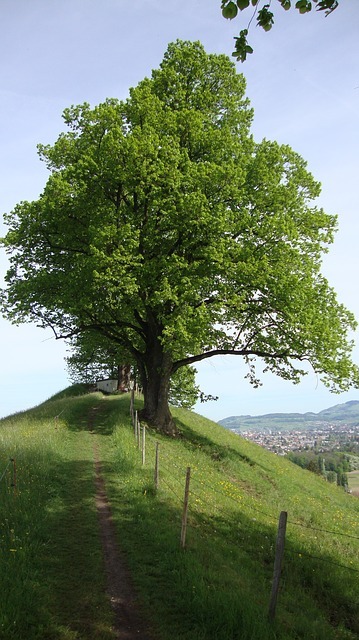tangledwing:Why don’t trees bleed to death when they get injured?Researchers from Virginia Tec
tangledwing:Why don’t trees bleed to death when they get injured?Researchers from Virginia Tech; George-August University in Gottingen, Germany; and the Jackson Laboratory in Bar Harbor, Maine, have discovered how “check valves” in wood cells control sap flow and protect trees when they are injured.A powerful new type of microscope, the 4Pi, has allowed scientists to see nanostructures inside of microscopic structures known as bordered pits within wood fiber cells. Previously, wood had to be dried, coated with carbon, and put under a high vacuum to be studied at the nanolevel. But the 4Pi, combined with an optical imaging technique called confocal laser scanning microscopy, makes it possible to see the wood cells in a more natural state, which has led to some interesting discoveries.The team’s research is featured as the cover story in the September 2013 issue of the American Journal of Botany, one of the top 10 most influential journals over the last 100 years in the field of biology and medicine, based on a survey by the BioMedical and Life Sciences Division of the Special Libraries Association.The article, “A new approach for the study of the chemical composition of bordered pit membranes: 4Pi and confocal laser scanning microscopy,” was written by Daniela Maschek, a student at Georg-August University in Gottingen, Germany; Barry Goodell, professor of sustainable biomaterials in the College of Natural Resources and Environment at Virginia Tech; Jody Jellison, professor of plant pathology in the College of Agriculture and Life Sciences at Virginia Tech and associate director of the Virginia Agricultural Experiment Station; Mark Lessard of The Jackson Laboratory in Bar Harbor, Maine; and Holger Militz, a professor at Georg-August University. Maschek worked in Goodell’s lab to conduct this collaborative research.“The wood fiber cell, which is 100 times longer than it is wide, can be a quarter-inch long, or longer,” said Goodell. Along each cell are hundreds of bordered pits, which are shared between the walls of adjacent wood fiber cells. A tree’s fluid sap passes from one cell to the next through the bordered pits.Each pit contains a mesh of nano-sized cellulose fibers that radiates out from a thickened, solid, central region called the torus — looking somewhat like a bulls-eye in a target. Fluids ooze in through the mesh-like membrane, around the torus, and out the other side.“When wood is injured, such as by an insect, or is being dried, like we do with kiln-dried lumber, the torus and part of the membrane will typically shift from the center of the pit to one side in order to seal the pit opening,” he said.The scientists have discovered how some of the nanostructures of the membrane move with the torus to seal off the pit. And they have found the location of certain chemical components of the membrane, which include crystalline cellulose and pectin.“When we used specific chemical tags to dye the pectin red and the cellulose green, we saw for the first time that pectin surrounds the torus and forms ring-like structures at the margin of the torus,” Goodell said. “Scientists had never seen these before, nor knew that pectin formed these unique ring-like structures in the membrane. As part of the pit sealing process, pectin separates to form an outer fringe around the torus, while the bulk of the pectin gets pulled into the aperture to block it.”In addition, the scientists discovered that the center of the torus is a hollow filled with a fluid or gel that gets squeezed out when the process to seal the pit begins.The reason the pit membrane seals the cell is one of simple physics. “When the tree is injured, sap starts to flow out, and air flows in,” Goodell said. “This changes the partial pressure and, just like a check valve used in plumbing systems, the bordered pit closes. The movement and redistribution of the pectin is also in response to this partial pressure differential.” -- source link
